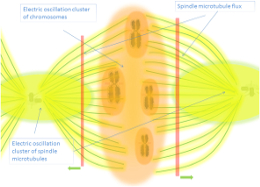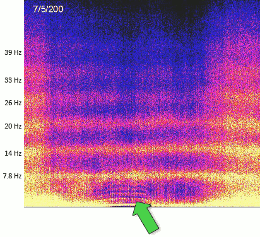

Biophotons - Various
Different roles of biophotons in communication and the health diagnosis by their measure
The ambit of influence of biophotons is diverse from visual imagery to morphological cues, special relevant to this section is the use of these emissions by different organism or cells to communicate with other partners of the same specie or other. Apart of all the profound conclusions that can be extracted interesting technical application are presented as food quality assurance or cancer diagnosis. ...
Biophotonic emissions, sometimes also termed "Ultraweak photon emissions" or UPE, has been measured in all types of plant, animal, and human cells [1][2], the initial findings by Russian academics of various biological objects (so called inductors) and its influence on mitotic rate of other biological objects (detectors) which were separated by transparent crystals where the first signs that these emissions have, at least, some kind of informational capacities [3], and we will see that modern variations of these researches and other kind of experiments underline the vital importance of these endogenous light specks in biological systems.
The original sources of these emissions in cells are various, apart from reactive oxygen species (superoxide anion radicals, hydrogen peroxide, hydroxyl radicals, and lipid peroxidation products) other sources for biophotonic emissions from other biomolecules, which are not associated with ROS, are very probably working [4], in the XX century one of the most prominent investigator on these emissions, F.A. Popp, postulated the DNA as a source, as conformational changes in DNA causes changes of the photon emission of cells [5]. But this, in a more generalized principle, could be applied also to proteins as is described in the Resonant Recognition Model [6] where taking into consideration the individual frequency pattern that is defined by the amino acid sequence and the polarity of every amino acid caused by their functional group, or in the case of DNA its nucleotides, it is discovered that proteins and also DNA can function as resonators for frequencies in the range of 1013-1015 Hz, that is in the visual range, so being biophotons.
There is a section for this very interesting model in this web [7]. All that it can be said is that the origin of these emissions are not clear, there is a section in this web also to treat specifically the problem of their origin [8], but anyways for sure are various origins as various wavelengths of biophotons are working at any moment in cells, and it must be taken into account that externally detected proportion of biophotons, compared to those that are generated inside cells is small [9].
In this section a variety of experiments are presented, but for following the thread of what was said in the second paragraph in relation to the intercellular or inter subject communication by these emissions we will start underlining the results of those kind of experiments. For example, there are numerous findings that begin with the recognition that in some therapies like for example treating cancer with radiation, the unexposed cells were affected in a related way, like some form of communication exists. This was temed the "bystander effect" and has been detected in specifically designed experiments with samples separated with crystals and others [10][11], in [12] even entanglement like effects have been detected:
" The mechanism is unknown but our group has evidence that physical signals such as biophotons acting on cellular photoreceptors may be implicated. This raises the question of whether quantum biological processes may occur as have been demonstrated in plant photosynthesis. To test this hypothesis, we decided to see whether any form of entanglement was operational in the system. Fish from 2 completely separate locations were allowed to meet for 2 hours either before or after which fish from 1 location only (group A fish) were irradiated. The results confirm RIBE signal production in both skin and gill of fish, meeting both before and after irradiation of group A fish. The proteomic analysis revealed that direct irradiation resulted in pro-tumorigenic proteomic responses in rainbow trout. However, communication from these irradiated fish, both before and after they had been exposed to a 0.5 Gy X-ray dose, resulted in largely beneficial proteomic responses in completely nonirradiated trout. The results suggest that some form of anticipation of a stressor may occur leading to a preconditioning effect or temporally displaced awareness after the fish become entangled."
And this "bystander" effect is caused not only when targets are exposed to ionizing radiation, but even no-ionizing radiation cause it [13].
Anyways in relation to intercellular/intersubject communication by biophotons other very curious experiments are presented in this section, for example in [14] they enclose the sample with mirrors to find if some kind of auto-optic effect occur (that is if sample's own biophotons have effects on them when reflected to themselves), in this case they found that hat the genoprotective effect of melatonine in presence of mirrors had significant difference with one without mirrors. This really is not totally inesperable as already initial findings on mitogenic radiation found that reflecting mirror can alter morphologies of growing samples [15].
In an experiment that is a very interesting nexus that can serve to weave what is says above with what come next [16], biophotons, in this case generated as a consequence of a mental projection, are also mirrored causing augmented perception on sender, very spectacular, and that gives rise to some profound ideas (as we are talking about perception qualia not only information). Here we must know also that there is experimental confirmation that when a subject imagine white light an increased production of biophotons are detected from his brain [17][18].
So, at this point, it must be mentioned that there exist a line of investigation that propose that biophotons are directly related to the visual imagery generation, that is treated in this subsection [19] but that, again, there is a more specific section in this web in this case for biophotons studies related to brain and mind functionality [20].
Much more is presented here, and returning to intersubject communications in [21] there is a confirmation of a biophotonic role in the communication between bacteria:
" When recording a culture of E. coli for biophoton emissions we find, unequivocally, that the culture responds reliably when another culture of bacteria in the vicinity is insulted with hydrogen peroxide. Furthermore, we find that we can discern whether the species of bacteria receiving the hydrogen peroxide is of the same species that we are recording biophotons from, or not. The results of the present study add to the already overwhelming evidence suggestive of non‐local communication; that is, communication in absentia a classical medium. ...
We do not claim the two cultures communicated through light, but rather that by measuring the light emissions of one system we learned information about the other system."
Biophotons measures can serve to assess the quality of a food, for example in eggs [22]:
" Eggs from free-range laying hens were characterized by an eight-fold higher emission of photons compared to eggs from caged hens, and they had over three times higher content of natural antioxidants in the form of carotenoids. Most probably, the higher number of photons emitted is associated with a higher content of biologically active substances in the material under study. Photon emission also varies in different ways depending on the specific hen breeding system. Differences in time in the identified maximum values of photon emission result from the composition of individual parts of the egg. Different times in which the emission peaks occurred for free-range eggs and for caged eggs were observed."
In this same context, they also can serve to detect if a wheat is infected by insects [23] or their quality in general [24], the quality of plants seeds [25], etc.
In respect to human health there is an under development but experimentally well tested way to differentiate normal from cancer cells, in a very initial phase or even the pre-phase when tumor is not initiated but some associated signal pathways are active, by means of analyzing the biophotonic emissions from subjects [26][27][28], in [29] it can be read:
" Tumor cells displayed increased photon emissions compared to non-malignant cells. Examining the standardized Spectral Power Density (SPD) configurations for flux densities between 0.1 and 25 Hz (∆f = 0.01 Hz) yielded 90% discriminant accuracy. The emission profiles of mice that had been injected with melanoma cells could be differentiated from a non-malignant reference groups as early as 24 h post-injection. The peak SPD associated with photon emissions was ~20 Hz for both malignant cell cultures and mice with growing tumors. These results extend the original suggestion by Takeda and his colleagues (2004) published in this journal concerning the potential diagnostic value of UPEs for assessing proliferations of carcinoma cells. The specificity of the spectral profile in the 20 Hz range may be relevant to the consistent efficacy reported by several authors that weak magnetic field pulsations within this frequency range can diminish the growth of malignant cells in culture and tumor weights in mice."
References:
8. EMMIND › Endogenous Fields & Mind › Biophotons › Biophoton Sources
20. EMMIND › Endogenous Fields & Mind › Biophotons › Biophotons in Neurons and Brain
Very related sections:
↑ text updated: 14/06/2020
↓ tables updated: 03/12/2023
Endogenous Fields & Mind
 Biophotons - Various
Biophotons - Various
Reviews on Biophotons ║ Biophotons and intercellular or intersubject communication ║ Biophotons and blood ║ Biophotons differently emitted by cancer cells ║ Various experiments and new data on Biophotons ║ Some other theories/opinion on Biophotons ║ Biophotons in visual perception and imagery (Bókkon 's model)
|
|
|
|
| Author(s) |
|---|---|---|---|---|---|
| F |  | Humoral phototransduction: light transportation in the blood, and possible biological effects |  | 2008-(4) | F. Grass, S. Kasper |
| F |  | Biophoton research in blood reveals its holistic properties |  | 2003-(10) | V.L. Voeikov, R. Asfaramov, E.V. Bouravleva, C.N. Novikov, N.D. Vilenskaya |
| A |  | Ultra-weak chemiluminescence of smokers' blood |  | 1985-(1) | Binkoh Yoda, Yoshio Goto, Katsuro Sato, Akio Saeki, Humio Inaba |
.
.





















